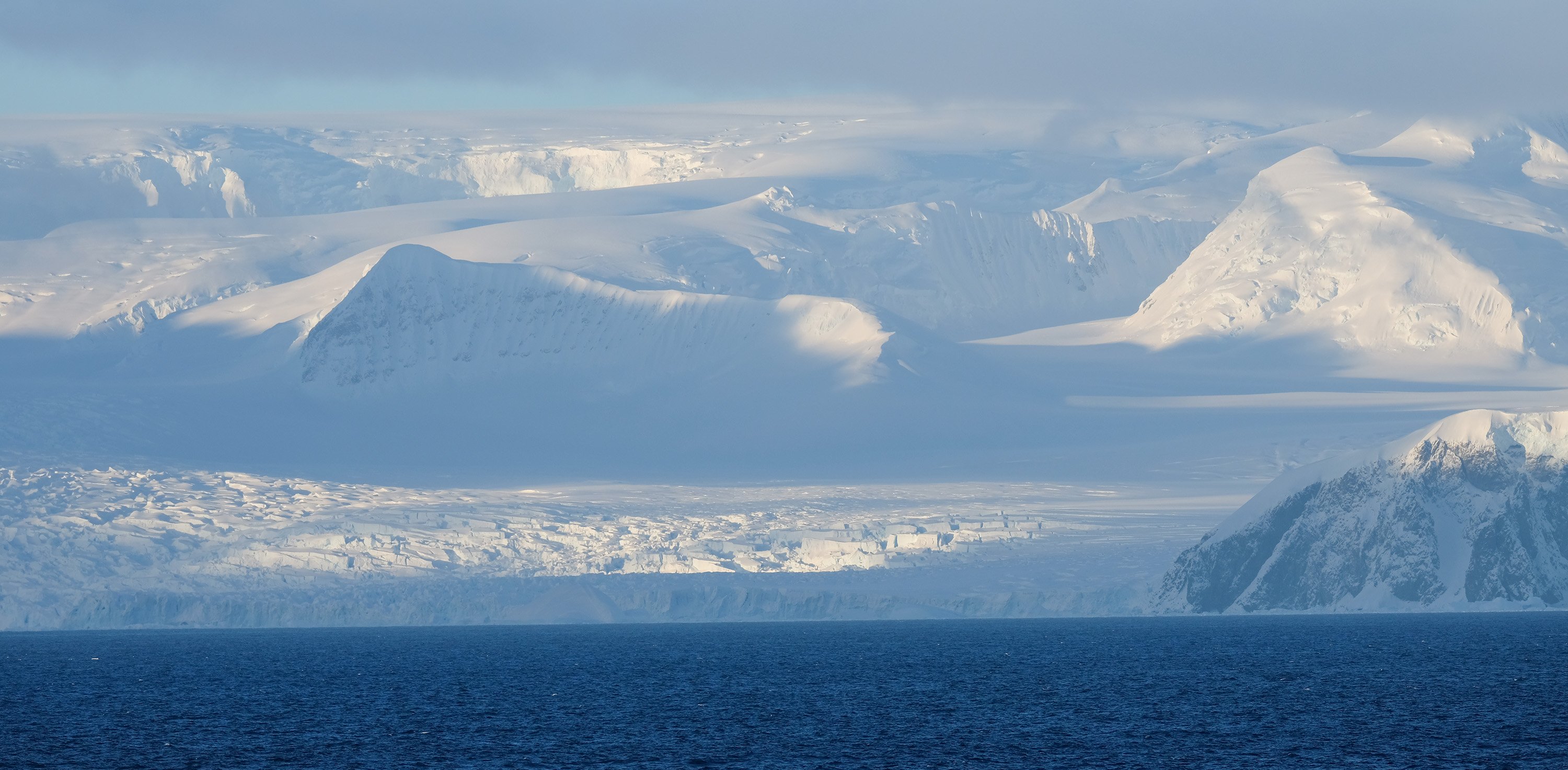This article was first published on March 09, 2023
Andrew Lowther of the Norwegian Polar Institute spends part of each year living in a tent in Antarctica, gathering data on the interaction between fisheries and marine vertebrates.
During the Antarctic summer, you’ll find Australian Andrew Lowther, PhD., camping somewhere around 60 degrees south. He, typically with another scientist or two, is there to observe and document the populations and movements at sea of marine predators, such as penguins, seals and whales, and assess the potential impact that fisheries have on their primary food source - krill.
“We use GPS tags and high-definition cameras to track, in time and space, where adult penguins go in relation to where fishing trawlers are catching krill, for example. Penguin chicks are completely dependent on their parents for food and cannot swim yet, so that means the parents are restricted in terms of how far they can go out to sea to get food before they need to come back to land” he explains. Every time a penguin catches krill in the water, Andrew and his colleagues can see it. These data result in some rather sophisticated algorithms for estimating the amount of krill consumed by penguins, and the variability in how much they eat, relative to where they roam.
Every time a penguin catches krill in the water, Andrew and his colleagues can see it. These data result in some rather sophisticated algorithms for estimating the amount of krill consumed by penguins, and the variability in how much they eat, relative to where they roam.
“We can then start to see if feeding rates change, for example whether feeding rates drop in areas where a fishery is operating,” he adds.
Andrew describes his job as “finding out the things that others have assumed to be correct but are not yet tested, or assessing whether the data available are capable of supporting the claims being made.” He says that there is a common assumption that if penguin numbers go down, then the fishery is the only possible cause. While it may be the only variable we can actively manage, he says, ignoring the bigger picture of what may be driving these declines isn’t particularly honest. But he doesn’t care much for these assumptions., So he spends months at a time in the extreme cold, living in tents on dehydrated food, to collect data to test them.
It’s not what you take, it’s where you take it from
Its widely accepted that at a circumpolar level, there are hundreds of millions of tons of krill. At scales relevant to what the fishery operates over, a multinational survey conducted in 2018 failed to detect a change in the krill biomass around the western Antarctic Peninsula and Scotia Sea over the last 20-years.
“With a catch rate of less than 1% of the biomass, the krill fishery has had almost no impact from a global context. It’s a drop in the bucket,” he explains. “However, if you take krill from a small area where constrained predators such as penguins and fur seals need it, then you could potentially have a disproportionate impact. So, it’s not what you take, it’s where you take it from.”
What Andrew describes is the ‘spatial management’ of marine resources to reduce the risk of these impacts. He looks at how those resources overlap with fisheries at key times and places, just as he does with penguins and seals. The issue, he says, has never really been about how much krill there is, but rather how removing it from a relatively small area can affect the ecosystem around it.
That’s why a coalition of krill harvesting companies (ARK) in 2018 took their precautionary approach a step further. Together they introduced new measures to aid in the protection of the ecosystem at large – through the ‘spatial management’ approach to which Andrew refers. This marked the start of restricted fishing areas in buffer zones around key penguin colonies in the Antarctic Peninsula and the South Shetland Islands during breeding season.

Keeping science honest
“My science isn’t because I am particularly for or against fishing - I have worked previously to help reduce seal bycatch in fisheries that refused to accept there was a bycatch problem. No, a significant motivator for me is I just don’t particularly like the misuse of science, so I try to keep it as honest as it should, using data to tell the story and not being afraid to admit we don’t know something if the data are not clear, rather than claim something when it is not supported. There is some quite emotive and inflammatory language used when discussing predator-fishery interactions, and most of it is not very helpful or based on science-based evidence. The amount of krill being removed is nominal compared to the amount consumed for example by whales, and with rebounding populations of humpback and fin whales over the past 30 years, I just don’t see the data to support some of the claims being made regarding reducing the amount of krill available for them to feed on,” he adds.
It’s all about the scientific evidence
“We are going to go out there and keep on following predators such as fur seals, penguins and whales, and find out where these animals go, particularly when breeding season is finished and these animals are capable of moving more freely without offspring to feed.
The logistics of getting around Antarctica in areas away from national research infrastructure like stations and bases, makes getting these data from remote areas at times and in locations where the fishery operates almost impossible without active collaboration with the industry – one which they are positive to facilitate. A lot of the research on predator-fishery overlap and local krill abundance simply wouldn’t happen without them.
As well as working with partners in the fishery, we are also collaborating with tourism operators to establish marine predator monitoring programs, putting observers on ships to count whales and seals in fished and unfished areas during the spring, summer and autumn. Doing this, we will get a clearer picture of the dynamics between marine predators and resource extracting activities like fishing. It’s about collecting data to quantify what, if any, impact the fishery has and to help get a more data-driven picture about things people have assumed but haven’t tested.”
It is thanks to data like this that the krill fishery has a better overview of the ecosystem in which it operates, as well as a clearer indication of the areas that should be restricted due to the presence of predator populations.
Assumption is dangerous in Antarctic marine ecosystem management, which is why, year after year, Andrew and many other scientists pursues fresh data that is critical to maintaining and enhancing the sustainability of the krill fishery. His work is an important reminder that the sustainability of this fishery is a moving target that the industry must continuously work towards as the climate continues to change.
“The fact is that fisheries are an important source of protein for humans,” he says, “and so we must be nimble, by adapting our management strategies when new science-based information is available, and not destroy a resource on which so many depend. And I think in Antarctica we can keep on trying to do things better and better, based on real data.”